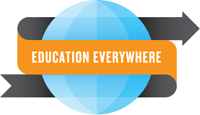Singapore’s 21st-Century Teaching Strategies (Education Everywhere Series)
By cultivating strong school leadership, committing to ongoing professional development, and exploring innovative models like its tech-infused Future Schools, Singapore has become one of the top-scoring countries on the PISA tests.
March 14, 2012
Your content has been saved!
Go to My Saved Content.
Education Everywhere Video Series
This series takes a look at high-achieving education systems and model schools around the world to see what makes them successful. This series is a co-production with the Pearson Foundation.
Singapore Fast Facts
- When Singapore gained its independence in 1965, most of its population of two million people were unskilled and illiterate.
- The government invested in education, and by the early 1970s, all children had access to lower secondary education.
- In 2009, the first year Singapore participated in the Programme for International Student Assessment (PISA) tests, its students placed near the top for all tested subjects: fifth for reading, second for mathematics, and fourth for science. See all 2009 PISA scores.
- Teaching is a highly respected and well-compensated profession in Singapore. All teachers are trained at the country's National Institute of Education (NIE).
- All new teachers are paired with experienced teachers for mentoring, and peer feedback is built into the schedule.
- Teachers are entitled to 100 low or no-cost hours of professional development each year.
- There are approximately 522,000 students attending about 350 schools in Singapore's education system.
- Class sizes are large, especially at the secondary level, averaging 36 students per class.
Watch more videos in the Education Everywhere series:
Or visit our global learning resource page for more resources.
Source: Singapore: Rapid Improvement Followed by Strong Performance PDF report by the OECD.